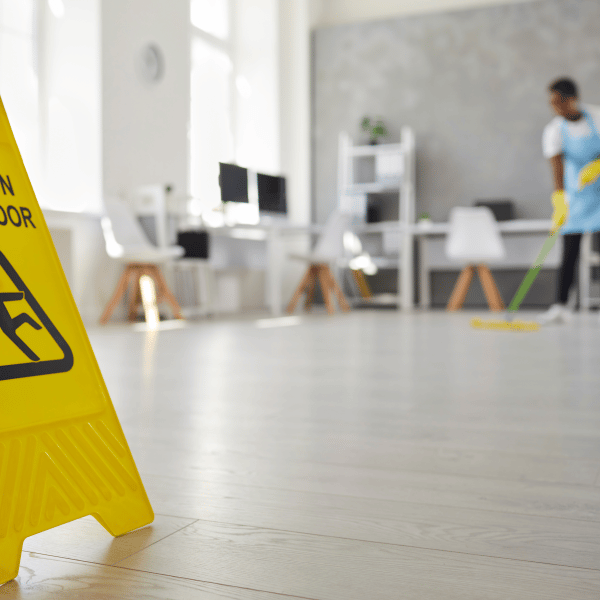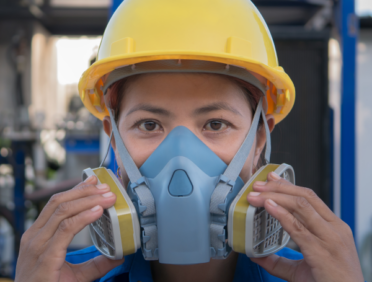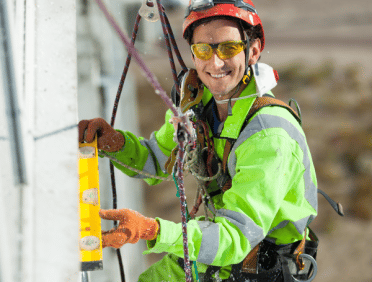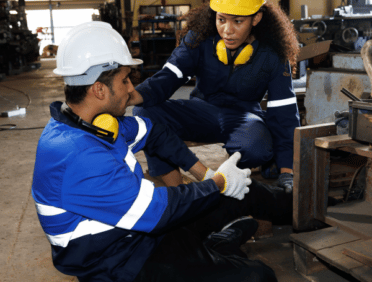One of the most common reasons that someone in a workplace, whether that is a staff member or a visitor to the premises, is injured is a slip, a trip or a fall. Whilst slips, trips and falls are common and often do not result in a serious injury, they are still something that can cause injury and, therefore, will need to be covered within the relevant health and safety guidance.
If you want to know more about the health and safety guidance that relates to slips, trips and falls, then let’s take a look at it in more detail.
What legislation covers slips, trips and falls?
It is worthwhile noting that there is not a specific piece of legislation that covers slips, trips and falls in the workplace. However, there are other health and safety-related legislation and guidelines that will relate to the main risks associated with slips, trips and falls.
These are:
Each of these different pieces of legislation and regulations covers a different aspect of health and safety whilst you are at work, and therefore they are somewhat linked to slips, trips and falls.
The Health and Safety at Work Act 1974
The Health and Safety at Work etc. Act 1974 is the main piece of legislation that covers health and safety in the workplace throughout Great Britain.
This Act looks at the duty that employers have towards their employees and the members of the public, the duty that employees have to one another and to others and also the duty that self-employed people have to either themselves or others around them.
The initial Health and Safety at Work Act of 1974 have been around for some time. Therefore, it made sense that there would be additions made to the initial outline over the years. One of these updates or reinforcements on the initial Act is The Management of Health and Safety at Work Regulations 1999.
These regulations take a much closer and more detailed look at what employers are required to do within their workplace in order to manage health and safety. These are presented as duties that must be met and that the workplace that they are responsible for is going to be as safe as it can be.
The Workplace (Health, Safety and Welfare) Regulations 1992
The Workplace (Health, Safety and Welfare) Regulations of 1992 cover a wide range of different welfare, health and safety issues and risks that may apply to the majority of different workplaces.
It is designed to help to ensure that staff members are protected whilst they are working and that the chance of problems developing is minimal.
The Work at Height Regulations (2005)
Working at a height can come with a variety of risks, which is why The Work at Height Regulations (2005) was created. The regulations outline the main things that you can do in order to prevent both death and injury should anyone fall from a height.
The regulations look at how any work that is carried out at height is planned, supervised and carried out. This includes things such as ensuring that everyone working at height is competent and that the equipment that they have, whether that is to carry out the work or to be protected whilst they do it, is fit for purpose.
The Personal Protective Equipment at Work Regulations (1992)
Within many industries, there is a risk of becoming injured or unwell due to the chemicals or materials that you come into contact with on a day-to-day basis. This is why the Personal Protective Equipment at Work Regulations (1992) was created.
These regulations require that employers provide their team members with the right level of PPE to enable them to be protected whilst they are working.
Some of the examples of PPE that should be supplied at work (depending on the nature of the work, of course) include:
- Safety helmets
- High vis clothing
- Safety footwear
- Ear protectors
- Thermals
- Waterproof clothing
Whilst PPE won’t stop incidents from happening, what it can do is help to minimise the impact that it has on the person both in the short and the long term.
Employer duties
There are lots of things that an employer should ensure that they do as a part of health and safety in the workplace and in particular related to slips, trips and falls.
All of these things are effective in their own right, but when brought together can really help to ensure that slips, trips and falls do not cause too much of an issue in your workplace.
It is important that you, as a business owner, arrange for a risk assessment to be carried out in relation to slips, trips and falls.
The idea of this risk assessment is that you look at the things that could contribute to a slip, trip or fall happening and causing an injury. You want to assess what the main risks are and find out whether there is a way that you can stop them from being an issue completely or improve on them so that they should not be as much of a problem in the future.
Common hazards
Common hazards for a workplace largely depends on the type of workplace you find yourself in. Some hazards are common between different workplaces, while others are unique to that particular setting.
Traditional office spaces with desks and computers are common, as are remote setups where employees work from home. Retail stores provide customer service, while factories and manufacturing workplaces focus on production. Healthcare facilities like hospitals serve medical needs, and construction sites host building projects. Restaurants and cafes are hubs for foodservice, and warehouses handle goods and logistics. Educational institutions encompass schools and universities, while laboratories support scientific research. Studios are creative spaces, libraries offer quiet study, and outdoor jobs include farming and forestry. The entertainment industry features theatres and studios, while co-working spaces provide flexible office solutions. Some unique work environments include remote islands, agricultural farms, call centers, military bases, and corporate boardrooms. These diverse settings cater to various professions and industries.
Principles of prevention
Whilst you should always know how you are going to approach a slip, trip, or fall should one happen in your workplace, the main thing that you need to consider is how to prevent them from happening in the first place.
The principles of prevention include:
All of these things can go a long way towards preventing a variety of slips, trips and falls from happening in your workplace, as well as give you the support that you need to provide to those who may have had a slip, trip or fall whilst they are working.
Health and safety arrangements
In order to minimise the chance of slips, trips and falls happening in a workplace, it is always good to have an overall understanding of the health and safety arrangements that are required.
Of course, the main consideration is that the workplace that they are working in is safe and that there have been the right measures taken to prevent any risks to health.
This should cover not only the environment itself but also the machinery, the materials and also the working practices too.
Another key aspect of health and safety arrangements is first aid resources, and these will be needed should an accident, injury or incident happen during the working day.
Health and safety assistance
As well as, employers ensure that their workplaces and the employees who work within them have the relevant health and safety arrangements in place; they also need to provide health and safety assistance when they are needed.
Health and safety assistance can come in a variety of forms. However, it is most often going to be reactive, such as first aid.
Information for employees
Another important to do as an employer when it comes to health and safety is to ensure that all employees have the information that they need to keep themselves (and those around them) safe.
This can come in a variety of forms, and you need to find a format that is going to work best for your business and your team members. This could be regular training, updates delivered by email or perhaps signs around the workplace that are relevant to different aspects of health and safety.
To download a .pdf of this blog, please click here












